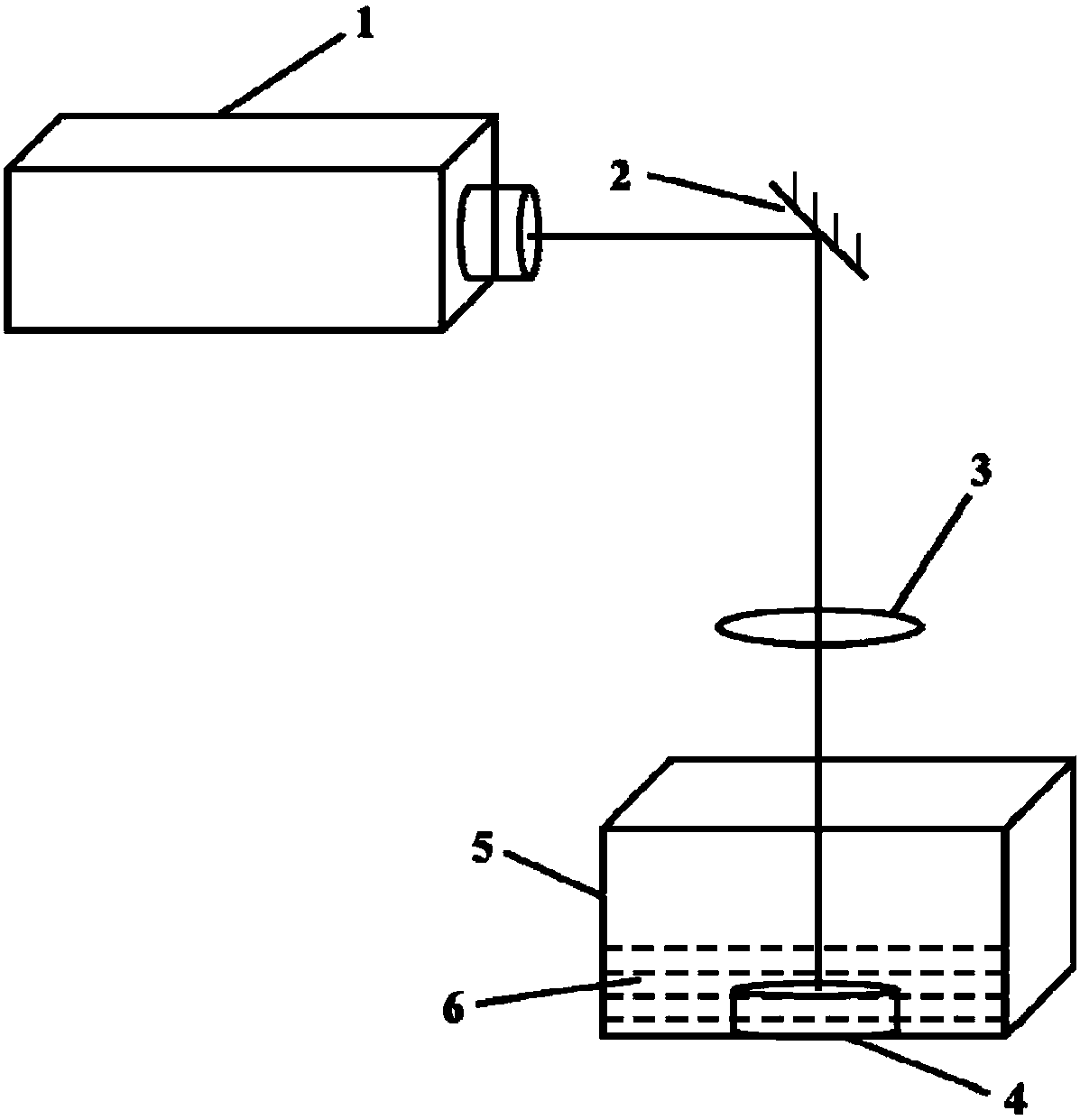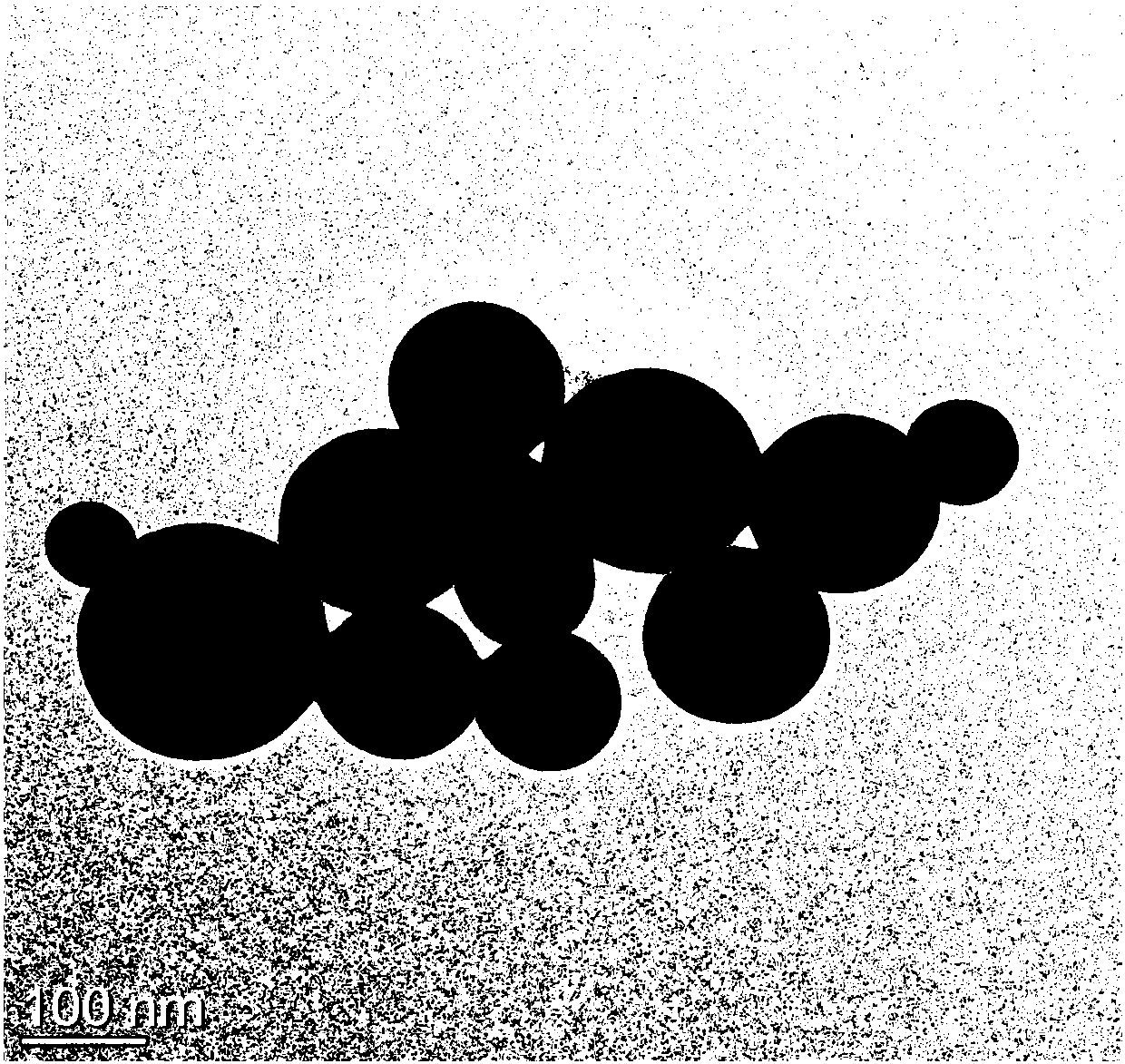Application of amorphous selenium
A technology of amorphous selenium and reaction vessels, which is applied in the synthesis and application of nonlinear optical materials, can solve the problems of low energy conversion rate and narrow band, and achieve the effects of simple preparation process, high stability and good repeatability
- Summary
- Abstract
- Description
- Claims
- Application Information
AI Technical Summary
Problems solved by technology
Method used
Image
Examples
Embodiment 1
[0042] like figure 1 As shown, in this embodiment, when preparing amorphous selenium, specifically laser 1 (using Ti:sapphire femtosecond pulsed laser, laser wavelength 800nm, pulse width 35fs), total reflection mirror 2, focusing lens 3, solid target material 4 , reaction vessel 5, secondary deionized water 6. Wherein, the pulsed laser frequency of the laser 1 is 1000 Hz, the pulse width is 35 fs, and the single pulse energy is 0-4 mJ; the solid target 4 is a selenium solid target with a diameter of 2 cm, a thickness of 0.5 cm, and a purity greater than 99.99 %; The reaction vessel 5 is a glass or plastic vessel, and in this embodiment is specifically a quartz vessel.
[0043] The following is the specific process of preparing the amorphous selenium particles in this embodiment, and the situation is as follows:
[0044] 1) Place the selenium solid target in a quartz container, then inject secondary deionized water into the quartz container, and let the secondary deionized w...
Embodiment 2
[0050] This embodiment mainly carries out optical second harmonic test to the amorphous selenium particle that embodiment 1 prepares, as Figure 4 As shown, specifically, laser 7 (using Ti:sapphire femtosecond pulse laser, laser wavelength 690-1040nm, pulse width 100fs, repetition frequency 80MHz, output power range 0-2W), partial reflector 8, focusing lens 9 , CCD10, spectrometer 11, condenser objective lens 12, vacuum sample stage 13. Among them, the reflection-transmittance ratio of the partial mirror is 1:1, the condenser objective lens is a confocal microscope objective lens, and the vacuum degree of the sample stage reaches 1.4Torr.
[0051] The following is the specific process of the optical second harmonic performance of the present embodiment testing amorphous selenium particles, and its situation is as follows:
[0052] 1) Place the amorphous selenium particles on a vacuum sample stage, and use a molecular pump to evacuate until the vacuum degree reaches 1.4 Torr.
...
Embodiment 3
[0058] The difference from Example 2 is that this example uses 110mW to excite the selenium particles to obtain the second harmonic signal reflected back, such as Figure 5b As shown, the full width at half maximum of the signal is 3nm; then, we tested the reflection signal of the selenium particles under different powers, the results are as follows Figure 5c As shown, the slope of the straight line obtained by fitting the experimental data is close to 2, which proves that the selenium particles do emit the second harmonic signal under the excitation light. It should be noted that for a single amorphous selenium particle with a diameter of less than 300nm, the second harmonic signal reflected by it has not been detected, and the second harmonic signal can only be detected by the spectrometer when the diameter exceeds 300nm.
PUM
| Property | Measurement | Unit |
|---|---|---|
| diameter | aaaaa | aaaaa |
| thickness | aaaaa | aaaaa |
| diameter | aaaaa | aaaaa |
Abstract
Description
Claims
Application Information
 Login to View More
Login to View More - R&D
- Intellectual Property
- Life Sciences
- Materials
- Tech Scout
- Unparalleled Data Quality
- Higher Quality Content
- 60% Fewer Hallucinations
Browse by: Latest US Patents, China's latest patents, Technical Efficacy Thesaurus, Application Domain, Technology Topic, Popular Technical Reports.
© 2025 PatSnap. All rights reserved.Legal|Privacy policy|Modern Slavery Act Transparency Statement|Sitemap|About US| Contact US: help@patsnap.com



